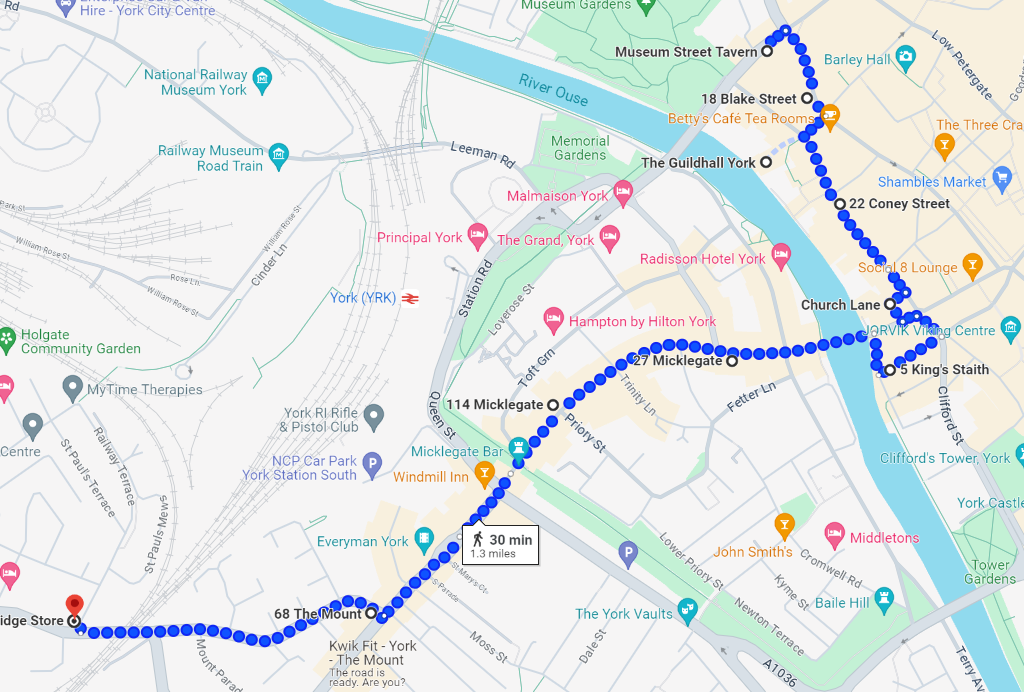Welcome to the 1800s Signs Walking Tour!
Step back in time and uncover the hidden gems of York with our 45-minute walking tour, dedicated to the fascinating ghost signs that have stood the test of time since the 1800s.
As you wander through the charming streets of this ancient city, you will encounter 14 captivating ghost signs, each telling its own story of York’s vibrant past.
The Route
Click here to follow along on Google Maps.
1. Thomas Hotel
Starting at the centre of town, the doorway of the Museum Street Tavern holds a distinctive tympanum. A semicircular decorative wall attachment is filled with moulded figures in foliage, and a cartouche announces “Thomas’ Hotel.”
Initially built in the early 1700s as a residential house, this building later became part of Ettridge’s Royal Hotel around 1800. After its purchase by William Thomas in 1858, it became known as Thomas’ Hotel.
For more information on this sign, click here.
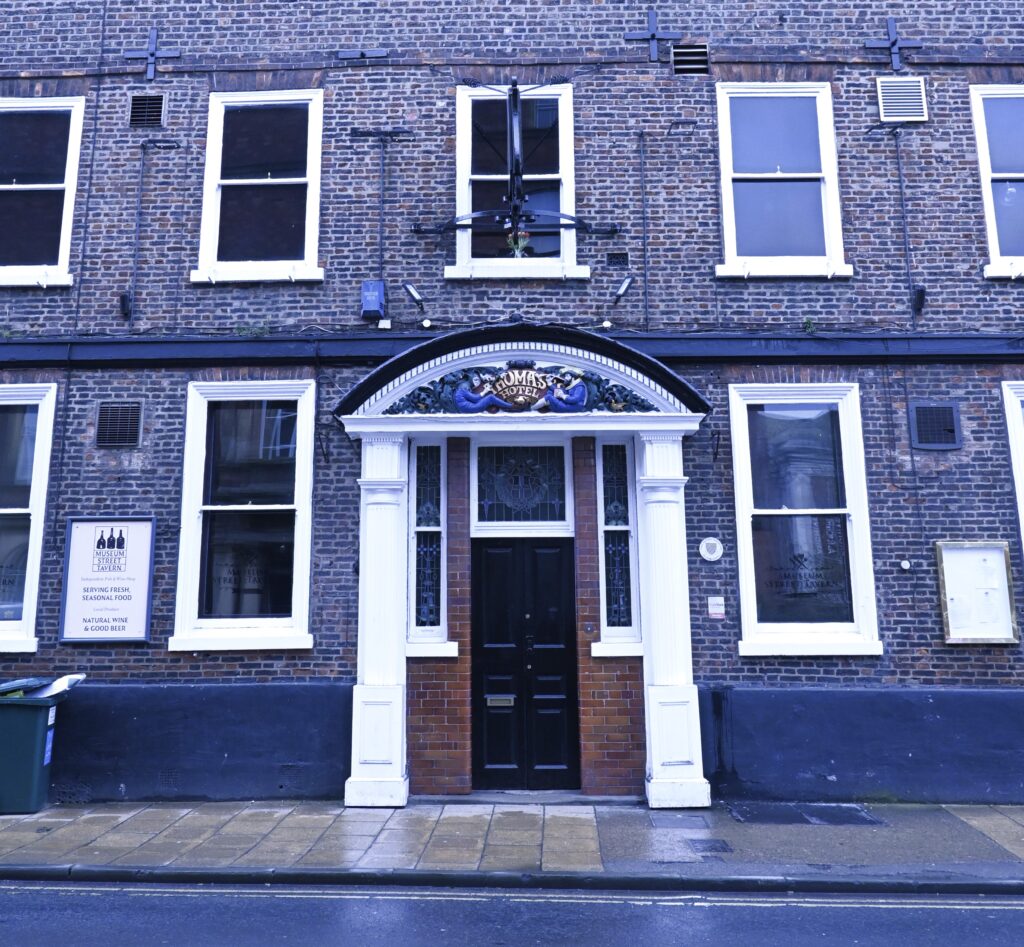
2. York County Savings Bank
Walk all the way down Blake Street until you’re stood outside Lakeland. Look up towards McDonald’s, and against the rooftops you can see ‘York County Savings Bank’ etched against brick.
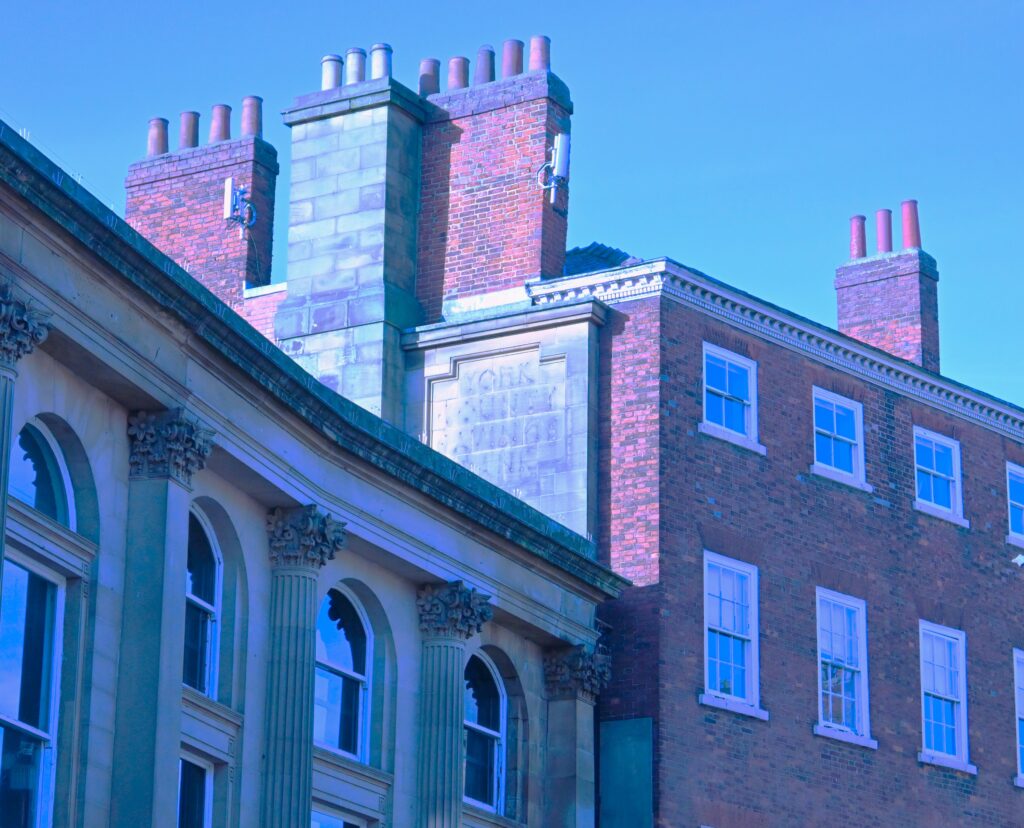
The York County Savings Bank was established in 1816. The bank took a significant step in 1829 when it purchased a large timber-framed house on St Helen’s Square – where the ghost sign now stands.
For more information on this sign, click here.
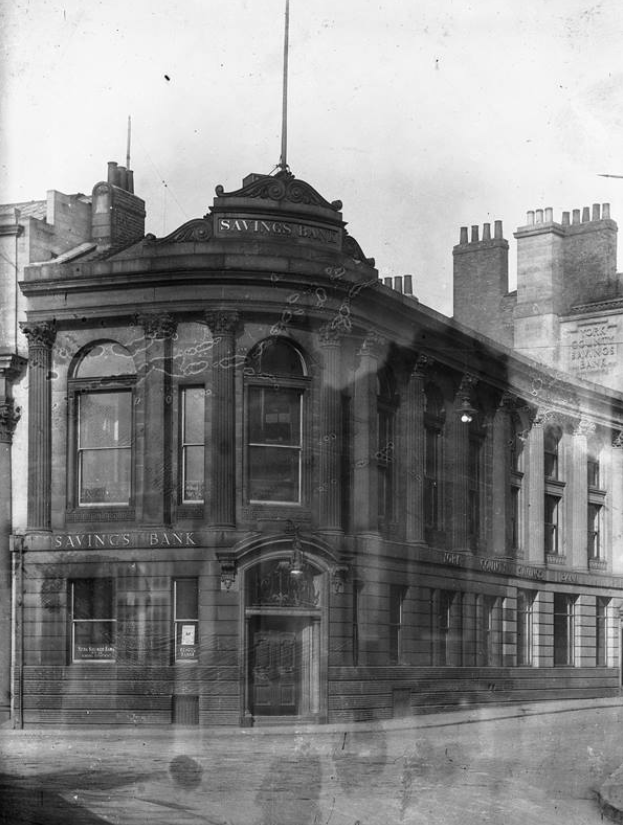
3. Kirby and Nicholsons
Walk across St Helens Square and through the archway into the Guildhall courtyard.
Turn to your left and across the wall you can see the remnants of the paint-on-brick ghost sign for Kirby and Nicholsons.
Kirby and Nicholson, a silk mercers, drapers, and ladies’ outfitter business, was established in 1876 by Potter-Kirby.
For more information on this sign, click here.
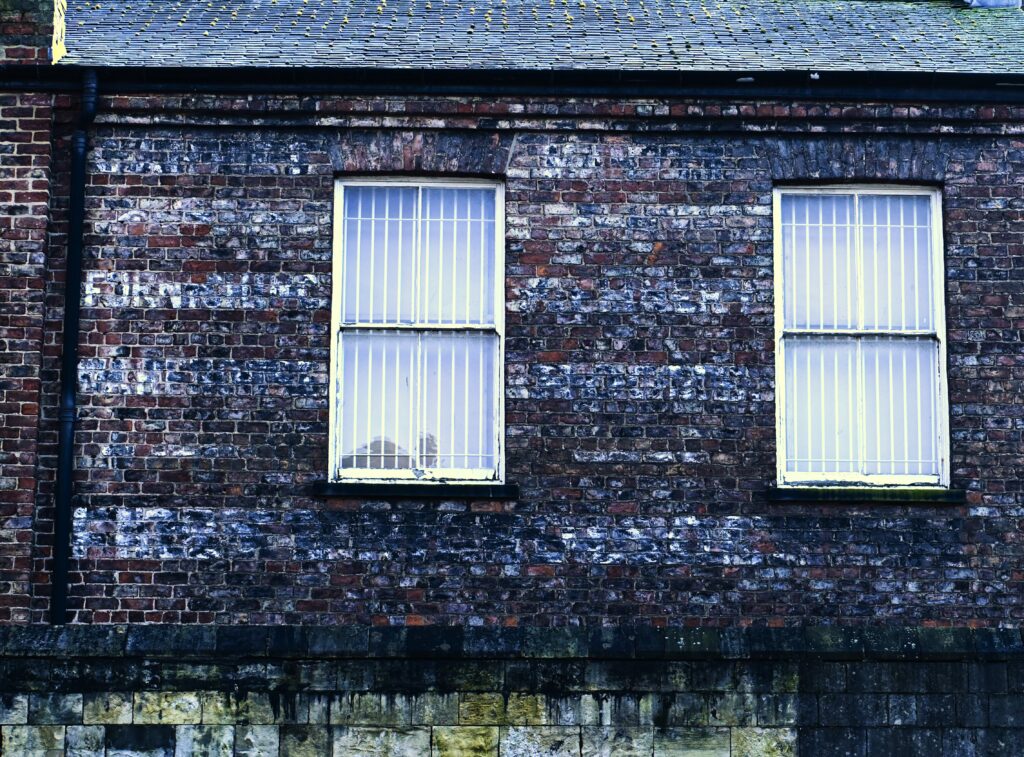
4. Singer
Walk out of the Guildhall courtyard and turn right. Continue down Coney Street for 2 minutes. On the left, you can see the Singer ghost sign attached to the front of 22 Coney Street.
The Singer Corporation, founded in 1851 by Isaac Singer and lawyer Edward Clark, is famed for its sewing machines. The company celebrated its 150th anniversary in 2001.
For more information on this sign, click here.

5. Brett Brothers
Keep walking down Coney Street until you come to a small archway on the right (next to Stormfront). Walk through the alleyway towards Yates’s beer garden.
On your right, you can see the faded ghost sign reading ‘Brett Brothers’.
Brett Brothers, a wine and spirit merchant company, was established in 1865 and became well-known for serving a variety of bottled ales, stouts, and champagne.
For more information about this sign, click here.
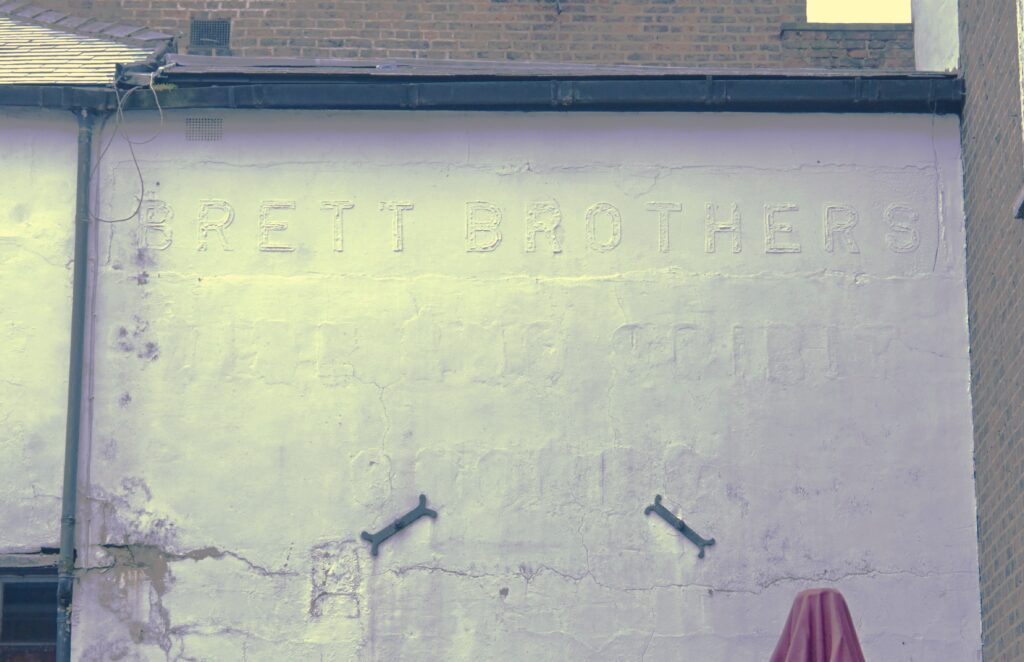
6. Ship Inn
Walk through the opposite alleyway and onto Bridge Street. Cross the road and walk down the stone steps next to the bridge.
Head past the Kings Arms, and look up at Lils on the Waterfront to see the twin ghost signs reading ‘Ship Inn’.

There’s a black wooden sign on the front of the building, facing the river. On the side of the building facing the Kings Arms, you can see a faded red paint-on-brick ghost sign too.
The Ship Inn dates back to at least 1787. The pub was rebuilt in 1851 as part of the first clearance of the Water Lanes.
For more information on this sign, click here.
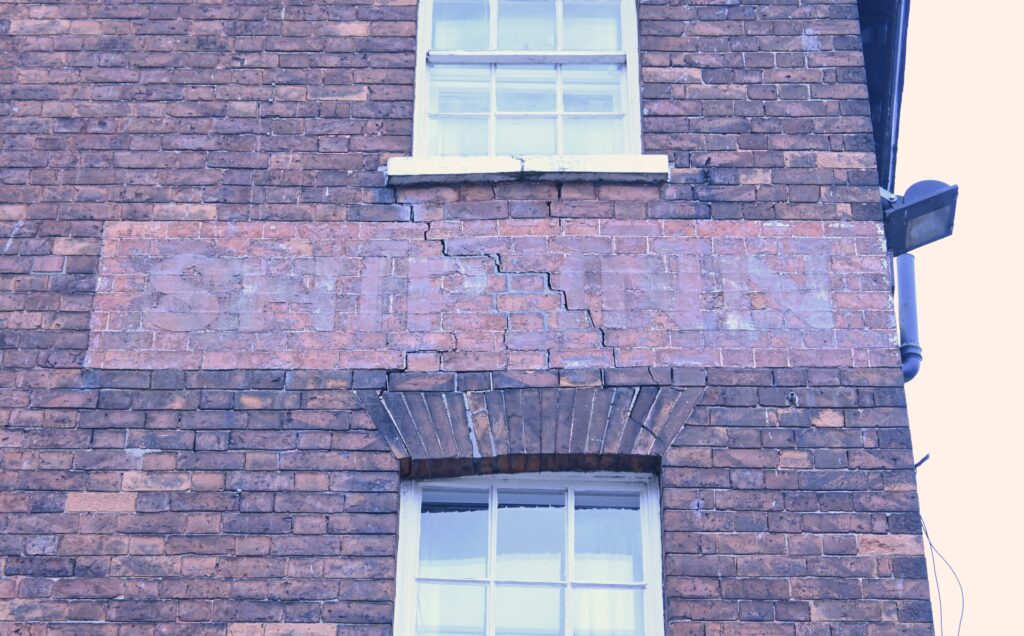
7. Ouse Bridge Inn
If you turn around towards Kings Arms, you can see a frosted glass ghost sign reading “Ouse Bridge Inn” on the side of the pub.
For more information on this sign, click here.
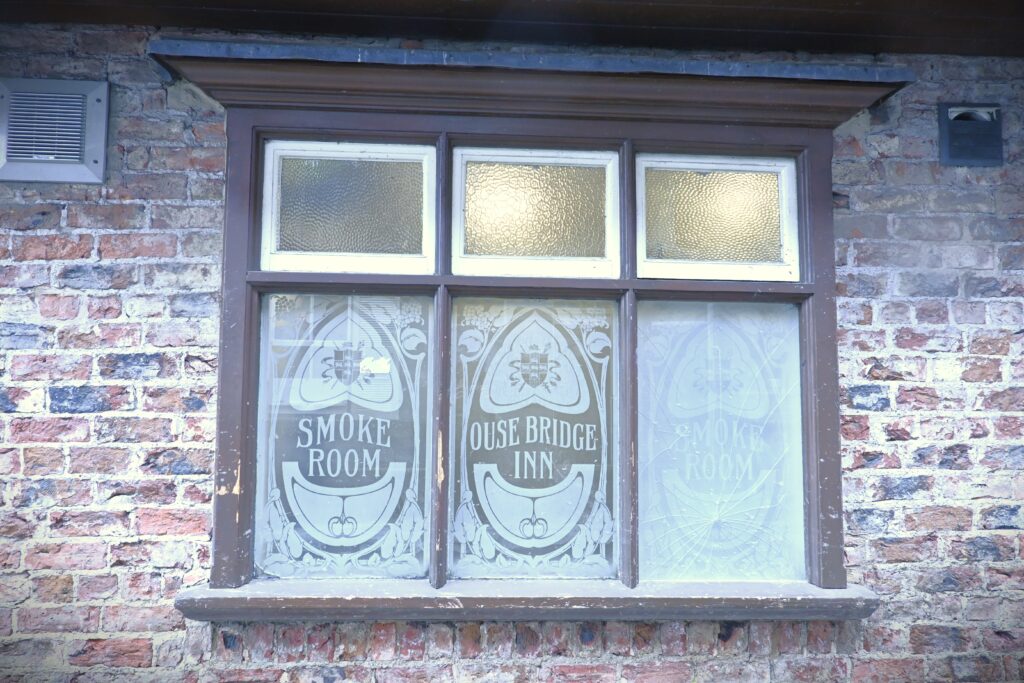
8. Aitken and Co
Head back up the stone steps and onto Bridge Street. Turn left and walk towards Micklegate for a minute or two. On the side of 27 Micklegate, you can see the aged sign for Aitken and Co.
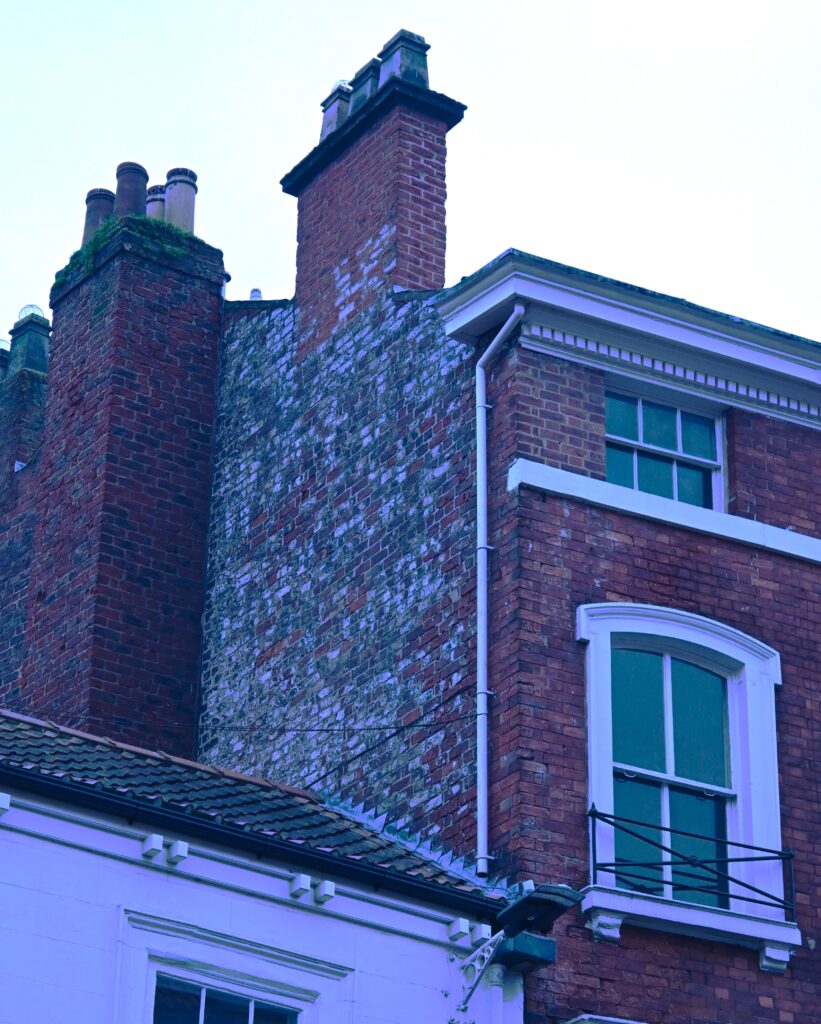
Aitken & Co. was established in 1820, and served as cutlers (who made cutlery), opticians, and surgical equipment suppliers.
For more information on this sign, click here.

9. Whitby Oliver
Walk further up Micklegate for a minute or two, staying on the right side of the road.
Stop when you come to the Traditional Fish and Chip shop, and look up to the right. On the side of 114 Micklegate, you can see the faded sign reading “Oliver’s”.
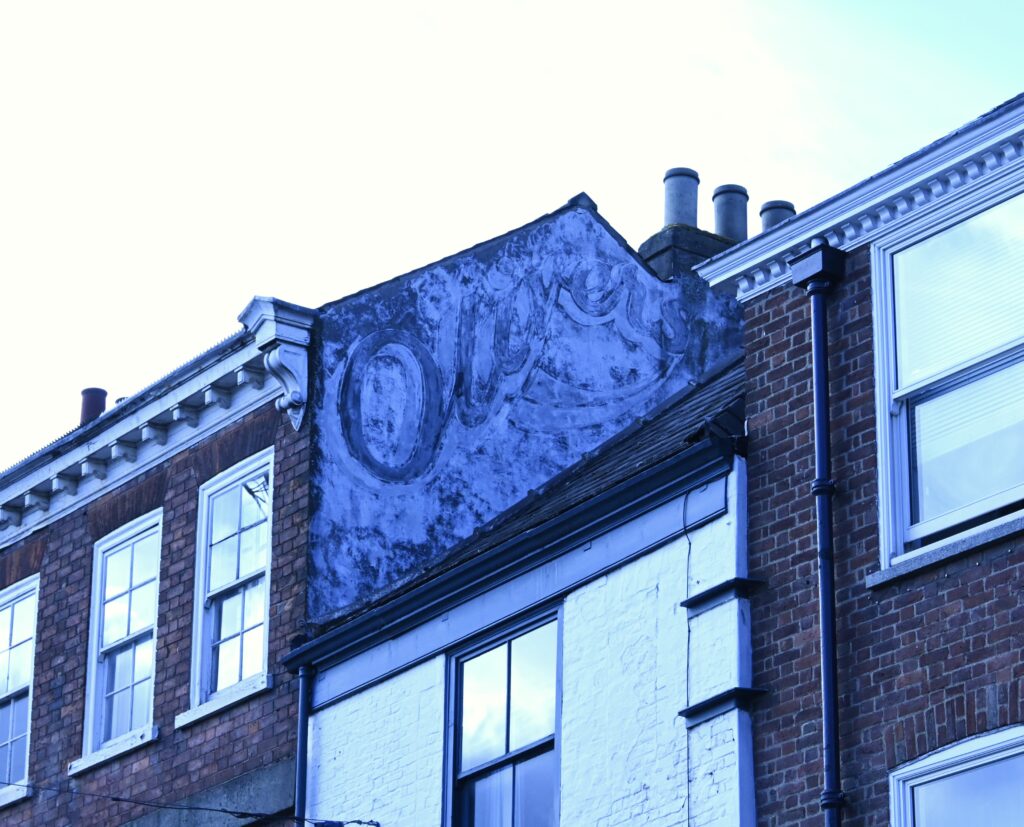
This sign for Whitby Charles Oliver, born in 1869, marks his furniture shop on Micklegate, which opened in 1897 when the sign was likely painted.
For more information on this sign, click here.
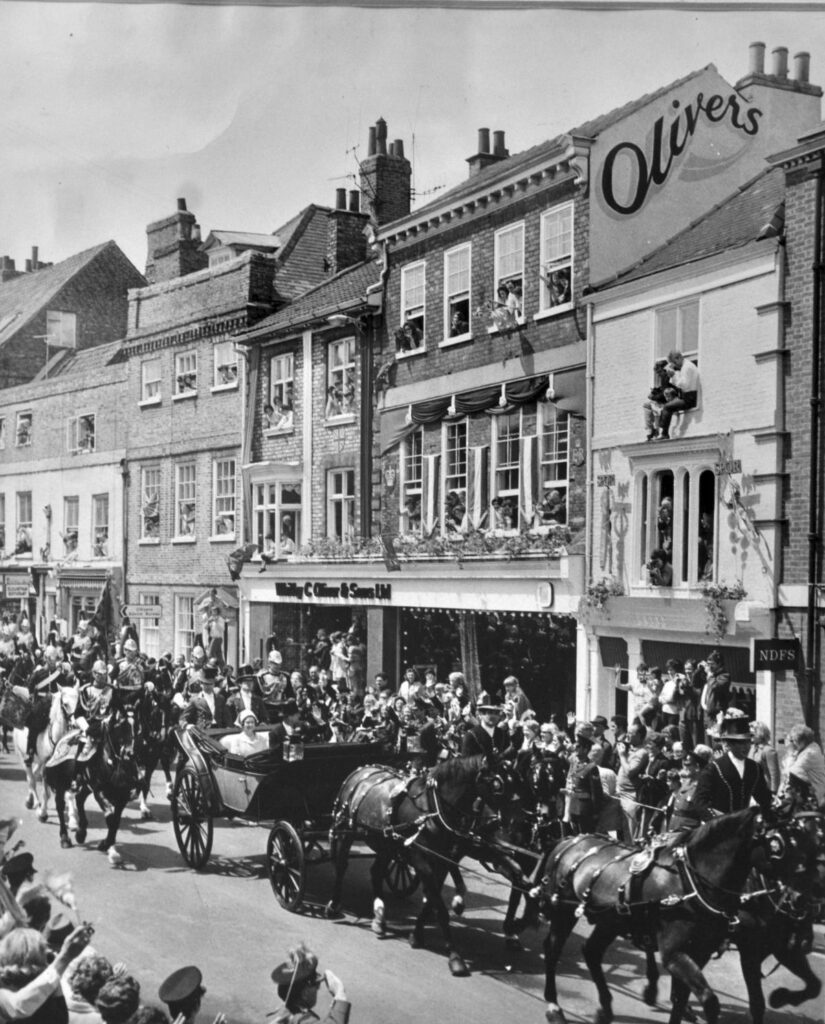
In the top right of this image, the sign is visible
10. Coning and Sons
Cross the road and continue down Micklegate. Cross the main road onto Blossom Street, and continue past Everyman until you come to the Sainsbury’s on the corner. Look up.
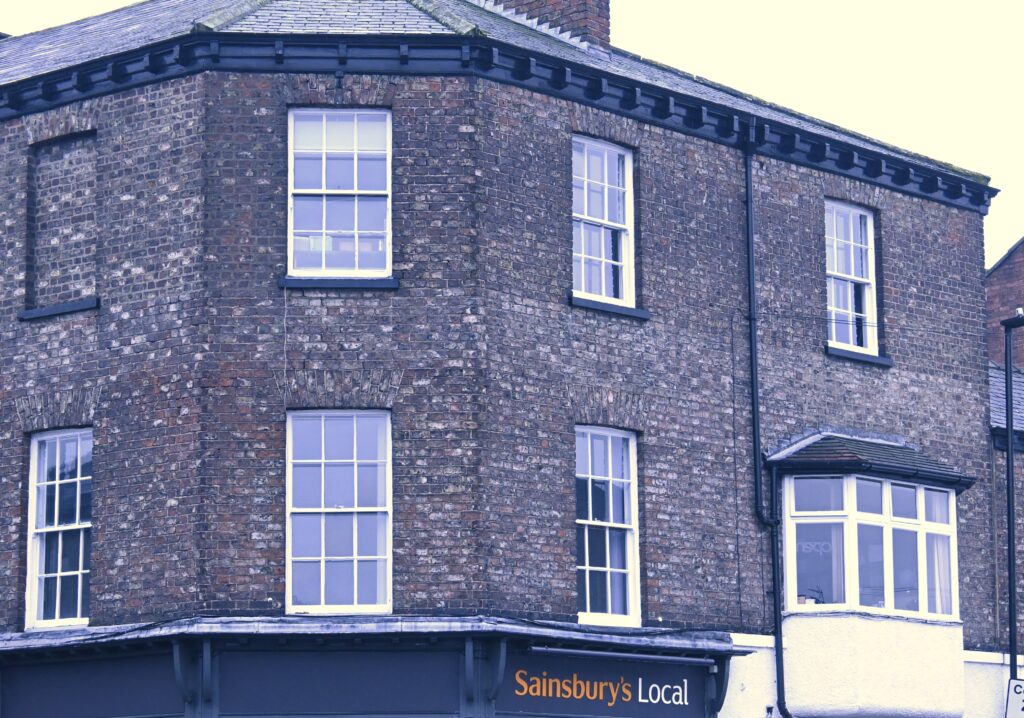
Showcasing a weathered ghost sign for ‘Coning & Son,’ a historic grocer and tea dealer, this sign highlights Thomas Coning’s legacy with shops at 19 Blossom Street (now 56 Blossom Street) and 28 Pavement.
For more information on this sign, click here.
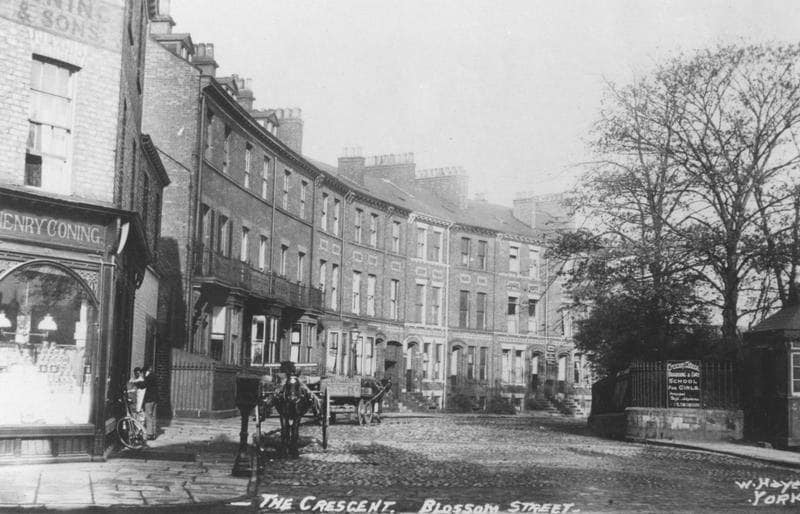
1890s – The sign is visible in the very top left corner
11. Cottam
A 1 minute walk down the street leads you to 60 Blossom Street. A faded mosaic reading ‘Cottam’ in black and blue tiles, stands prominently against a background of white and yellow tiles.
In the 1800s this building was owned by Elijah Cottam, a tobacconist. He sold an array of tobacco products and accessories such as pipes, lighters, and pipe cleaners.
For more information on this sign, click here.
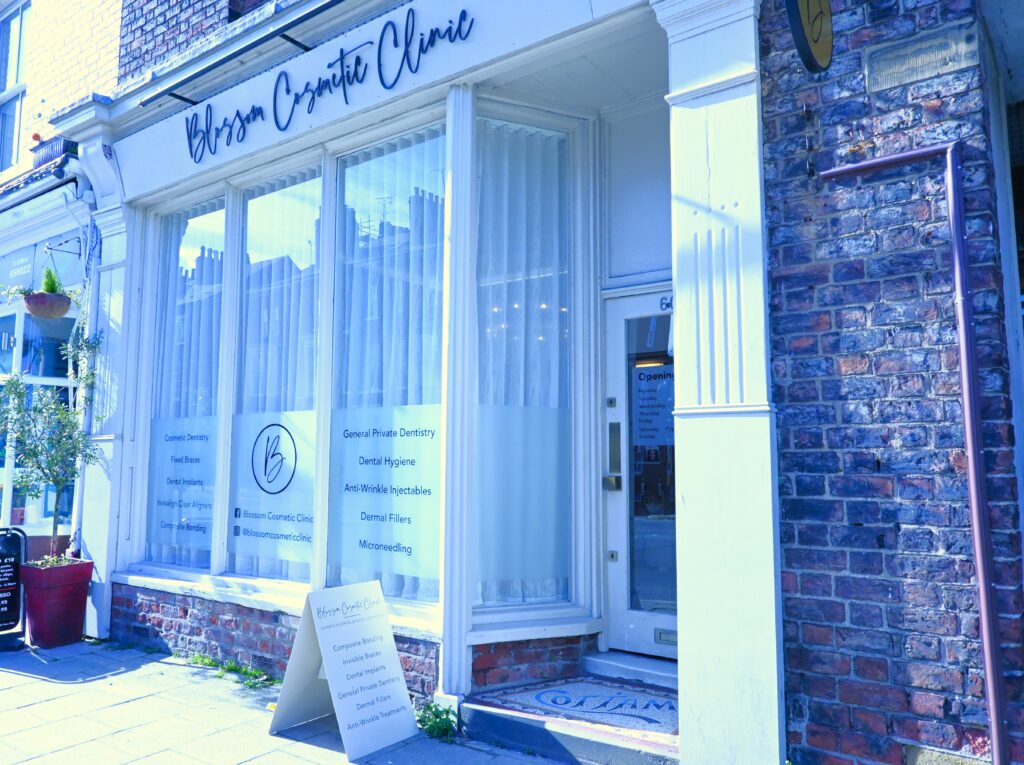
12. W. Wright and Sons
Just next door at 62 Blossom Street, another mosaic on the shop floor displays “W. Wright and Sons (York) LTD” in bold capital letters.
This harkens back to when the shop belonged to a butcher named W.Wright in the mid 20th Century.
For more information on this sign, click here.
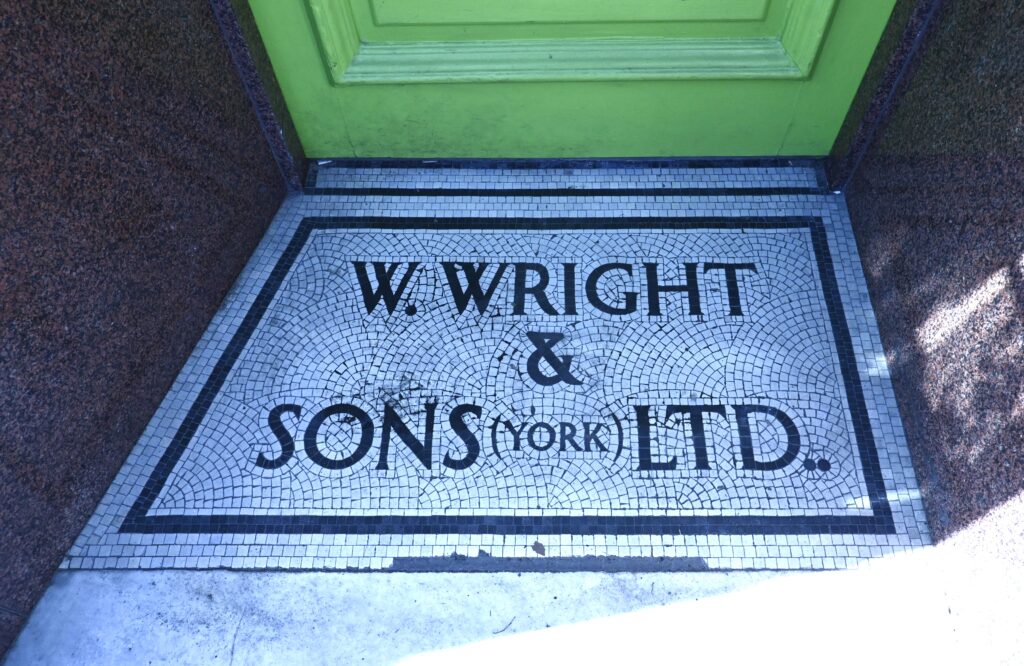
13. Coop 1889
Walk another 30 seconds down Blossom Street until you come to the junction between Holgate Road and Blossom Street.
Look up above Chiropractic 1st, and you can see a yellowing panel that once read ‘Shop at the Coop’, with ‘1889’ engraved above it.
The first successful co-operative was founded in 1844. At that time, living conditions in northern industrial towns were harsh.
Essential items like flour, sugar and butter were expensive, while unscrupulous practices like watering down milk and mixing flour with sawdust to cut costs were common.
For more information on this sign, click here.
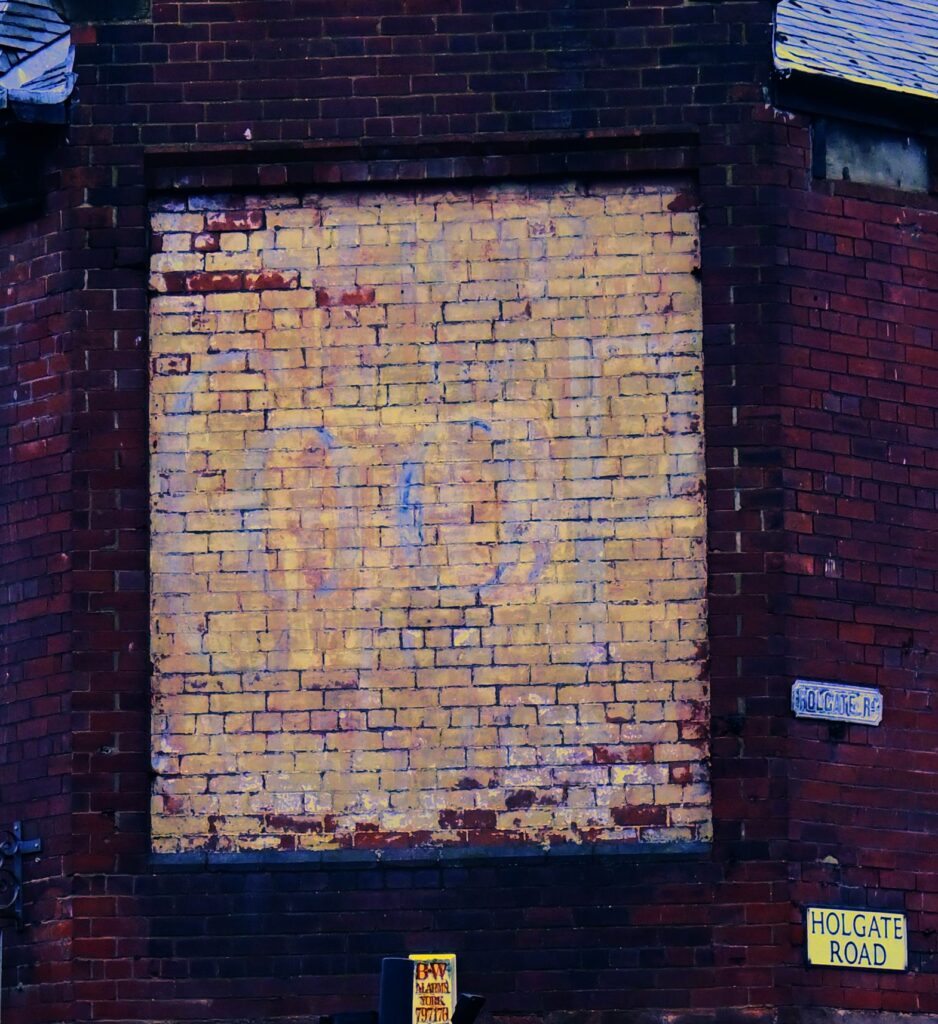
14. Ebor Dairy
Head down Holgate Road for 10 minutes, walking up the hill and across the Iron Bridge until you come to the Holgate Bridge Shop.
Look on the second floor of that building and you can see the final ghost sign of this tour: the faded ghost sign of Ebor Dairy.
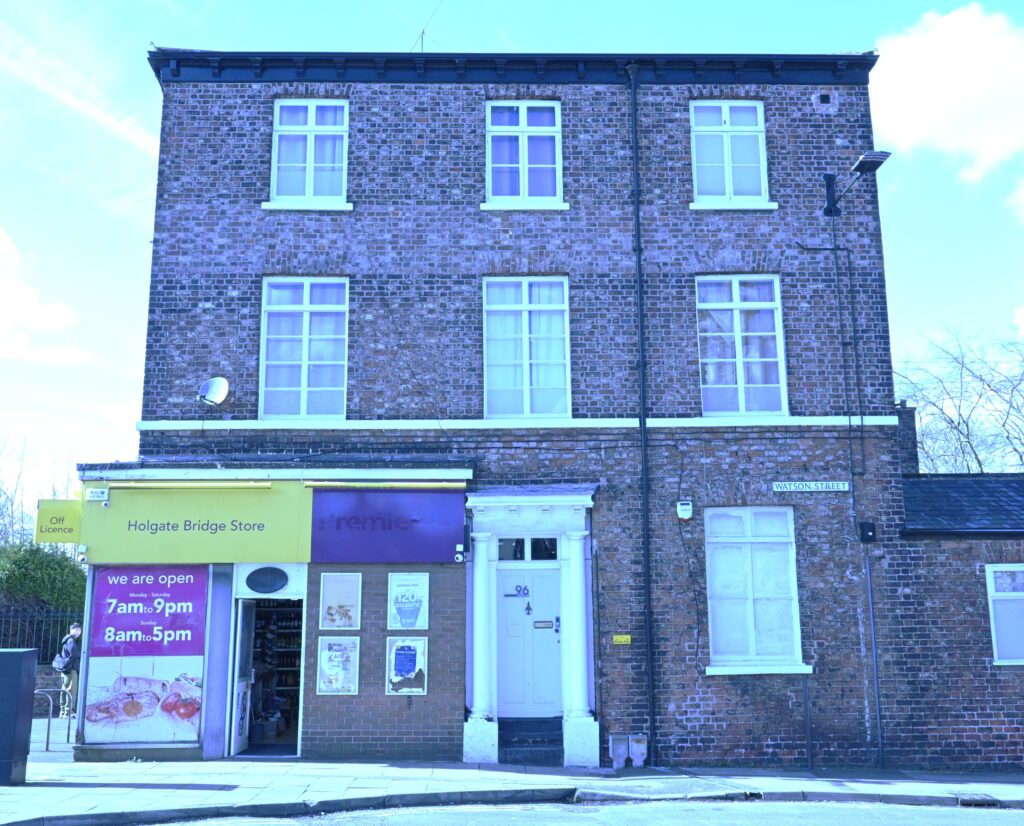
The Ebor Dairy was established in 1886, operating until at least 1895. The company engaged in various trades including tea dealing, confectionery, and dairy products.
For more information on this sign, click here.
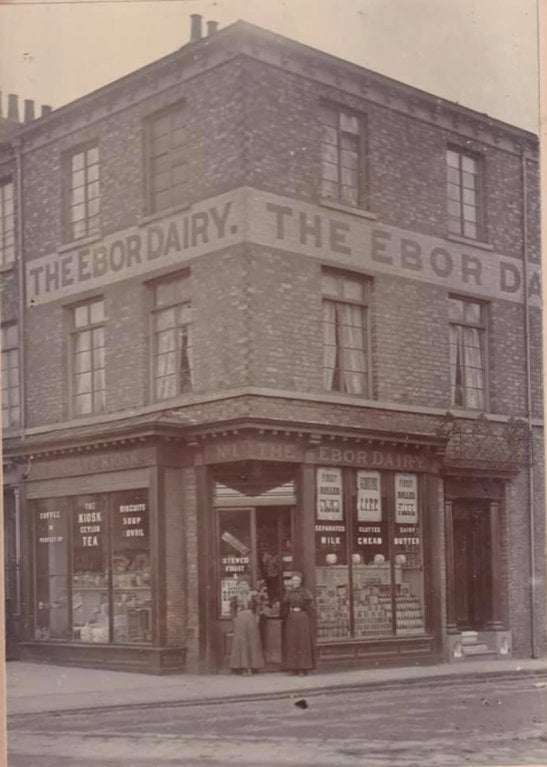
That brings you to the end of our 1800s ghost signs walking tour!
We hope you’ve enjoyed exploring these wonderful, century-old ghost signs, each a lasting piece of York’s rich history and heritage.
Got thoughts or a story to share about these ghost signs? We’re all ears—drop your comments below and join the conversation!

